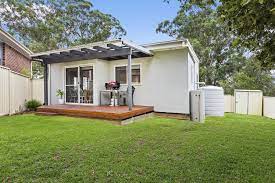Embracing Multigenerational Living: The Rise of Houses with Granny Flats

In recent years, there has been a noticeable shift in the way families choose to live together. With changing economic landscapes, evolving family dynamics, and a growing emphasis on sustainability, the concept of multigenerational living has gained traction. As a result, the traditional family home has undergone a transformation, giving rise to the popularity of houses with granny flats.
Granny flats, also known as accessory dwelling units (ADUs), are self-contained living spaces attached to or located on the same property as the primary residence. They typically feature a bedroom, bathroom, kitchenette, and living area, providing independent living quarters for older family members, adult children, or guests. These compact yet functional spaces offer privacy and autonomy while fostering a sense of closeness and support within the family unit.
One of the primary drivers behind the surge in houses with granny flats is the desire for intergenerational harmony. As life expectancy increases and healthcare improves, many families are facing the challenges associated with aging relatives. Rather than sending them to assisted living facilities or nursing homes, households are opting to keep their loved ones close by, allowing for greater involvement in caregiving and companionship. Granny flats offer a convenient solution, enabling seniors to maintain their independence while remaining connected to their families.
Moreover, the economic benefits of houses with granny flats are hard to ignore. With soaring housing costs and stagnant wages, many families are struggling to afford suitable accommodations. By incorporating a secondary dwelling on their property, homeowners can generate rental income or provide affordable housing for family members, easing financial burdens and enhancing overall stability. Additionally, the resale value of properties with ADUs tends to be higher, making them a sound investment for homeowners looking to maximize their assets.
In addition to facilitating multigenerational living, granny flats also serve as versatile spaces with a myriad of uses. They can function as home offices, studios, guest suites, or rental units, depending on the needs of the occupants. This flexibility allows homeowners to adapt to changing circumstances and make the most of their property’s potential. Whether it’s accommodating a growing family, generating supplemental income, or simply enhancing the livability of the home, granny flats offer a wealth of opportunities for homeowners to customize their living spaces to suit their lifestyles.
Furthermore, the trend towards houses with granny flats aligns with broader societal shifts towards sustainability and urban densification. By maximizing land use and promoting infill development, ADUs help mitigate urban sprawl and reduce environmental impact. They promote energy efficiency, encourage alternative transportation options, and foster a sense of community by promoting closer ties between neighbors. Additionally, granny flats can play a role in addressing housing shortages in densely populated areas, providing much-needed affordable housing options without the need for large-scale development projects.
Despite their numerous benefits, houses with granny flats are not without challenges. Zoning regulations, building codes, and homeowners’ association restrictions vary widely, making it difficult for some homeowners to add ADUs to their properties. However, policymakers and urban planners are increasingly recognizing the value of accessory dwelling units and are taking steps to streamline the approval process and remove barriers to construction.
In conclusion, houses with granny flats represent a modern approach to multigenerational living, offering practical solutions to the evolving needs of families in the 21st century. By providing affordable housing options, fostering intergenerational connections, and promoting sustainable development, ADUs are reshaping the way we think about homeownership and community living. As the demand for flexible and inclusive housing continues to grow, granny flats are poised to play an increasingly prominent role in shaping the future of residential architecture.




